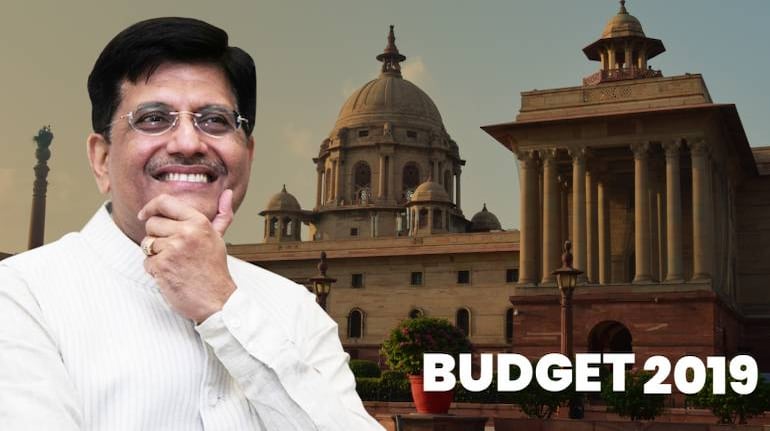



Gaurav Choudhury
There would seldom be a few periods in recent history than now, where the Indian economy has been so much a focal point, both from within and outside. The last 55 months has been a period of policy shocks, data disruptions, alliterative signature initiatives, institutional overhauls, procedural departures and new practices.
In this ride, which, needless to say, has been more than rough and tumble, one characteristic clearly stands out from the crowd: fiscal righteousness.
Since 2014 the finance ministry led by Arun Jaitley has remained steadfastly focussed on walking the talk on the fiscal discipline, not falling prey to wanton political or electoral populism.
When Jaitley presented the first budget in July 2014, less than two months after taking office, fiscal deficit — a measure of how much the government borrows to fund part of its spending — was just shy of 5 percent of gross domestic product (GDP).
Four-and-a-half years later, Piyush Goyal, standing in for Jaitley, pegged it at 3.4 percent for 2018-19. Shaving off nearly 1.5 percentage points in four years is both commendable and creditable, albeit, as some experts point, with a bit of a skilful window dressing and off balance sheet financial engineering.
The finance minister’s Interim Budget speech should be seen through two prisms: as a statement of intent or as a record taking exercise. As an epigrammatic instrument to present a record book with pithy details; or as an attempt to be careful on facts.
Goyal’s Interim Budget has a bit on both. Expectedly, he presented a glowing account of the Modi-government’s reforms and economic reports card.
A majority of promises made in 2014, Goyal suggested, did turn into tangible, visible policies over a five-year period, which has helped the economy shrug off rigidities that had become deeply entrenched.
Most of the initiatives — Make in India, Startup India, Insolvency and Bankruptcy Code and others — have winded their way through a legislative and procedural maze before these have started to deliver.
From a purely macro management point of view, five years the NDA government was presented with five key challenges: high inflation, regaining 9 percent GDP growth, making development inclusive, improving the public delivery mechanism and consolidating public finances.
The results have been mixed. However, for a few months in the beginning, the inflation genie has remained firmly bottled for the better part of the last five years. GDP growth is still some distance away from cruising along a 9 percent trail, partly hammered in by two big policy shocks: demonetisation and the goods and services tax (GST).
Inclusive development and improving public delivery systems remain a matter of subjective evaluation, with electoral consequences. However, the unfaltering single-mindedness to heal India’s wounded public finances back to health have remained a consistent non-negotiable objective over the last five years.
For 2019-20, Goyal has pencilled in a fiscal deficit of 3.4 percent, an aberration from the roadmap set earlier when it had sought to bring it down to 3.1 percent by 2019-20. Importantly, the medium term goal remains unchanged: to lower fiscal deficit by 3 percent of GDP by 2020-21.
That task that has become that much more difficult because it would entail achieving two targets: to ensure that the fiscal deficit doesn’t overshoot the 3.4 percent target this year, and then make sure that it is brought down by a substantial 0.4 percentage points in a single year. Both are formidable challenges, buffeted by a string of known and unknown unknowns.
For 2019-20 itself, revenue side of the deficit equation is predicated upon has at least three daunting hurdles.
One, the government is hoping to earn Rs 90,000 crore from disinvestment revenues. It is still far behind the Rs 80,000 crore targeted for this year, which Goyal is hopeful of clocking in the next two months.
Two, it wants the Reserve Bank of India (RBI) to pay extra dividends of Rs 20,000 crore this year, from Rs 54,817.25 crore budgeted earlier to Rs 74140.37 crore now, and wants it to raise it further to Rs 82,911.56 crore next year.
Three, the government expects GST tax collections to improve by more than Rs 1 lakh crore by 2019-20, something that looks a little daunting at this point in time.
At second glance, the Centre’s spending plans for 2019-20 also doesn’t add up for neat math. Goyal has budgeted for a healthy 13 percent in total expenditure at Rs 27,84,200 crore from Rs 24,57,235 crore last year, after factoring in a net Rs 55,000 crore rise because of the farm income support scheme.
Capital expenditure, however, is set to grow at only 6 percent. Notably, capital expenditure as a proportion of the total budget is actually set to fall 12.1 percent in 2019-20 from nearly 13 percent in 2018-19. One would have expected this to be reverse, given that government-led investment needs a leg up to “crowd in” private investment.
Be that as it may, the key takeaway is that the finance minister has made a compelling case for direct income transfers. This, one hopes, will accelerate the move to overhaul India’s notoriously leaky subsidy regime, making cash handouts the pivot for future welfare programmes.
For more Opinion pieces, click here.
Discover the latest Business News, Sensex, and Nifty updates. Obtain Personal Finance insights, tax queries, and expert opinions on Moneycontrol or download the Moneycontrol App to stay updated!
Find the best of Al News in one place, specially curated for you every weekend.
Stay on top of the latest tech trends and biggest startup news.